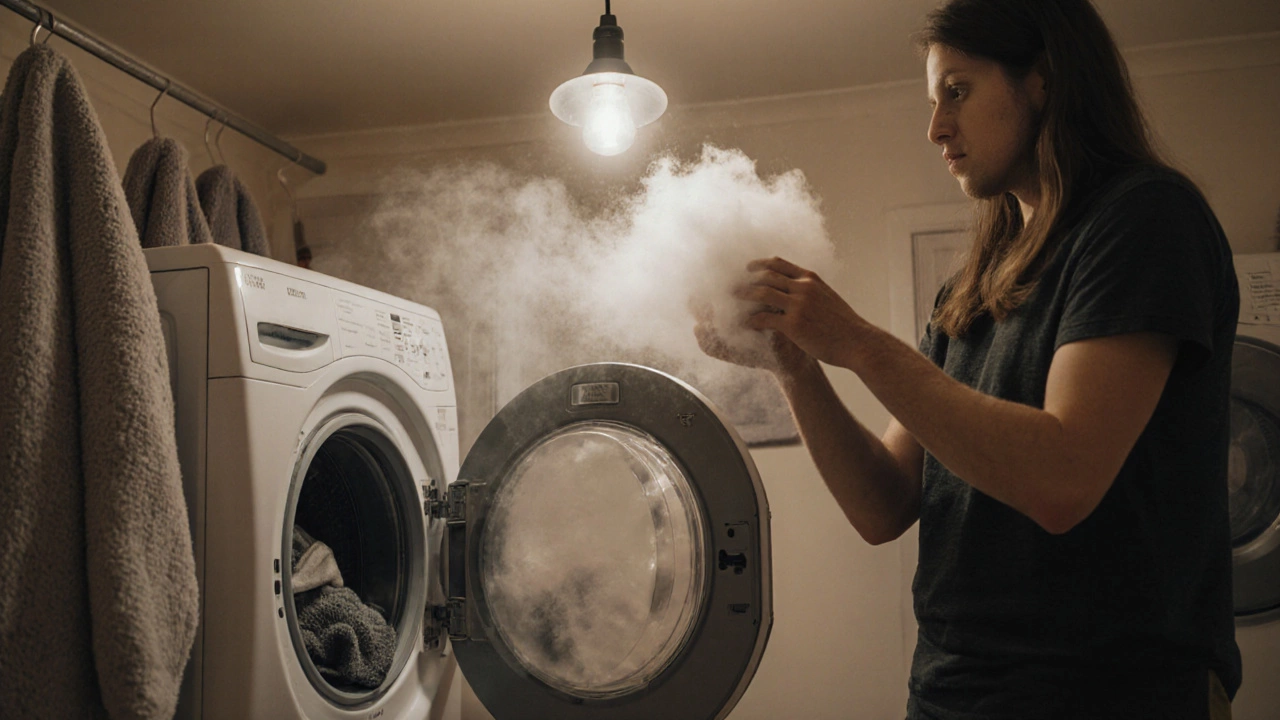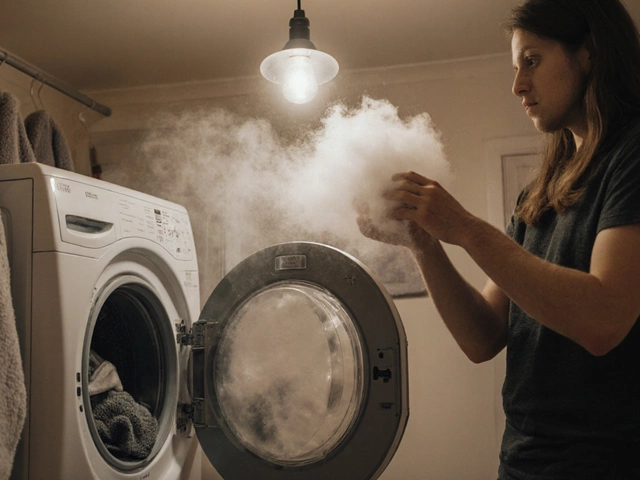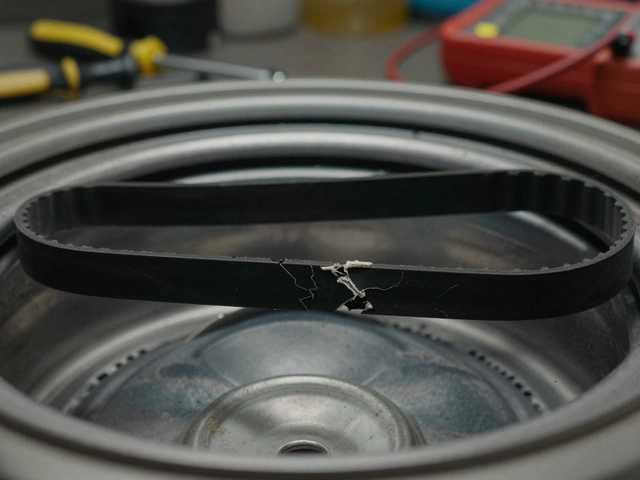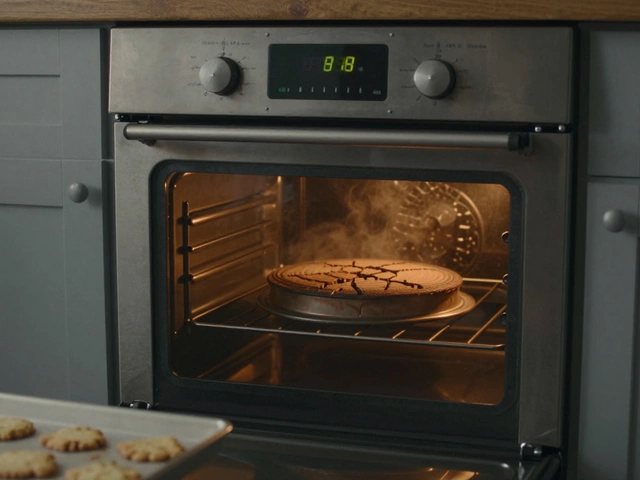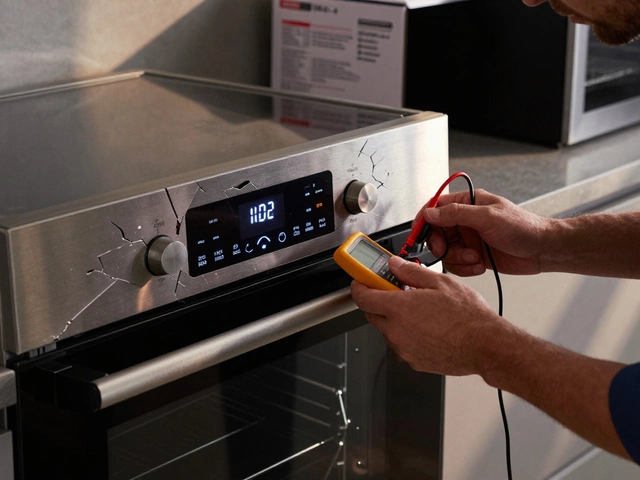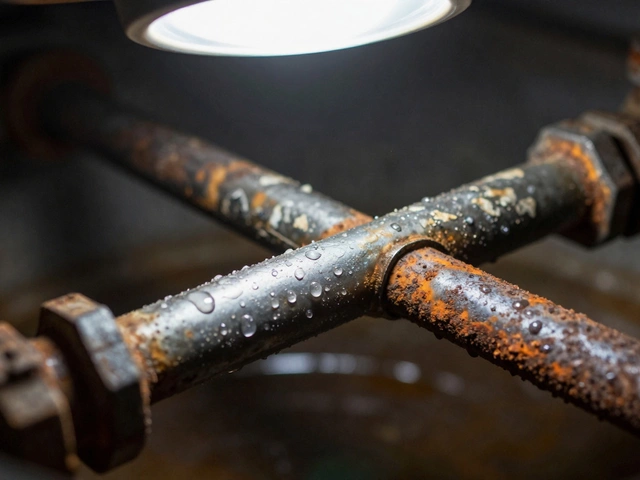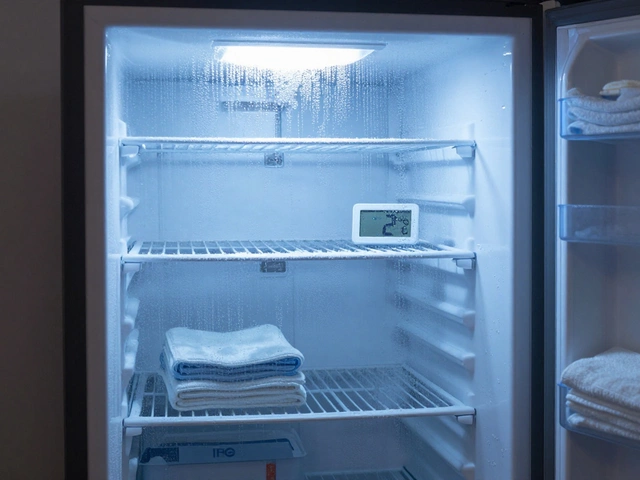Dryer Problem Diagnostic Guide
Select the symptoms you're experiencing to get targeted troubleshooting steps and recommended fixes for your dryer issues.
Select Symptoms
Check all symptoms that apply to your dryer. This will help identify the most likely causes and solutions.
Diagnosis Results
Select symptoms to see your diagnostic results.
When a Tumble dryer is a household appliance that removes moisture from laundry by blowing heated air through a rotating drum starts acting up, the frustration can be real. You pull a load, hear a weird noise, or end up with soggy clothes and wonder what went wrong. This guide walks you through the most common hiccups, how to spot them, and which DIY steps you can safely take before calling a pro.
Quick Takeaways
- Check the lint filter first - a clogged filter blocks airflow and tricks the dryer into thinking it’s overheating.
- No heat? Inspect the heating element, thermostat, and thermal fuse before blaming the power.
- If the drum won’t turn, the drive belt or motor is usually to blame.
- Loud rattles often point to a worn drum bearing or loose vent hose.
- Regular maintenance (cleaning the vent, inspecting the door switch) prevents 70% of breakdowns.
Why dryer problems happen: an overview
Dryers are built to handle heat, moisture, and constant motion. Over time, heat‑sensitive components wear out, debris builds up, and electrical parts can fail. The most frequent trouble spots are:
- Airflow restrictions (lint, vent blockage)
- Heating system failures (element, thermostat, thermal fuse)
- Mechanical drive issues (belt, motor, drum bearings)
- Electrical controls (door switch, moisture sensor, control board)
- Ventilation problems (kinked hose, improper exterior vent)
Understanding where the problem originates makes diagnosis faster and saves money.
Problem 1: Dryer not heating
The most common complaint is “my dryer runs but the clothes stay damp.” Heat is generated by the Heating element a metal coil that glows when electricity passes through, producing hot air for the drum. If the element burns out, the dryer still tumbles but provides no warmth. A faulty Thermostat a temperature‑sensing device that tells the dryer when to turn the heating element on or off can also stop heat from reaching the drum.
Steps to troubleshoot:
- Unplug the dryer and remove the back panel.
- Locate the heating element and visually inspect it for broken coils or black spots.
- Use a multimeter set to continuity; a dead reading means the element needs replacement.
- Locate the high‑limit thermostat (usually near the element) and test it the same way.
- If either component fails, order the exact replacement model (refer to the dryer’s serial number).
Replacing the element or thermostat is a straightforward DIY task for most front‑load or vented models.
Problem 2: Drum won’t turn (dryer not tumbling)
A stationary drum can be caused by a broken Drive belt a rubber‑reinforced band that connects the motor pulley to the drum drum pulley, allowing rotation or a seized motor. First, listen for a humming sound when you start the dryer; a hum without movement often points to a slipped or snapped belt.
How to check:
- Open the dryer’s front or rear access panel (refer to the user manual).
- Inspect the belt for cracks, fraying, or loss of tension.
- If the belt looks fine, spin the drum by hand; resistance indicates a motor issue.
- For motor problems, test the motor’s terminals with a multimeter for continuity and proper resistance.
In most cases, a new belt solves the issue and costs under $20. Motor replacements are more involved and may warrant a professional.
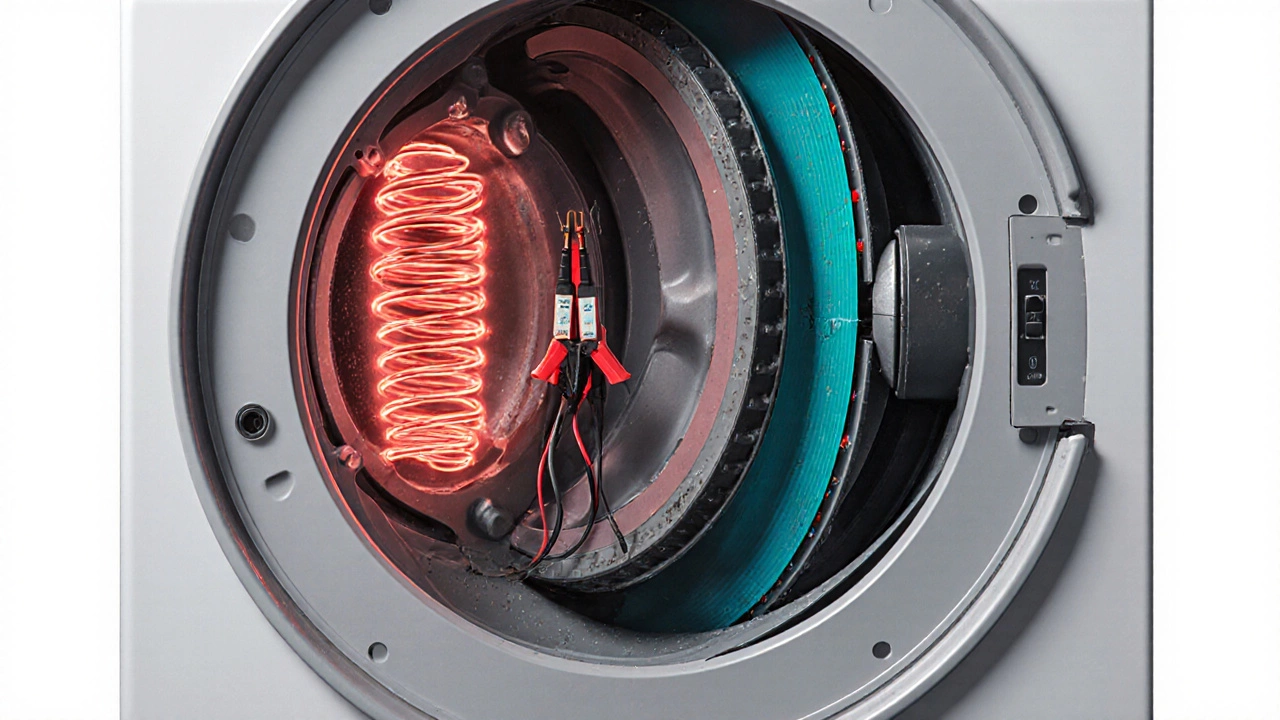
Problem 3: Loud noises or excessive vibration
If your dryer sounds like a jackhammer or shakes violently, the culprit is usually a worn drum bearing, a mis‑aligned drum, or a loose Vent hose the flexible conduit that carries moist air from the dryer to the exterior vent. Over time, the drum’s rear bearing can become gritty, creating a grinding noise each spin.
What to do:
- Pull the dryer away from the wall and remove the rear panel.
- Spin the drum manually; feel for rough spots or wobbling.
- Check the rear bearing housing for lint buildup; clean it thoroughly.
- If the bearing feels gritty, replace the bearing kit (typically includes shaft, seal, and lubricants).
- Inspect the vent hose for kinks or loose clamps; tighten or replace as needed.
Fixing a bearing usually eliminates the rumble and extends the dryer’s life.
Problem 4: Dryer stops mid‑cycle or overheats
Some dryers cut out halfway through a load, displaying an error code or simply shutting off. The most common reasons are a blown Thermal fuse a safety device that interrupts power when the dryer overheats, protecting the unit from fire or a faulty moisture sensor that tells the control board the clothes are dry when they aren’t.
Diagnostic steps:
- Locate the thermal fuse (often near the exhaust vent) and test it with a multimeter; no continuity means replace it.
- Find the moisture sensor bars inside the drum; wipe them clean of residue that can cause false readings.
- If the dryer still trips, the Control board the electronic circuit that manages timers, sensors, and motor functions may need replacement.
Thermal fuses are inexpensive ($10‑$15) and a typical DIY fix.
Problem 5: Dryer won’t start at all
When you press the start button and nothing happens, the issue is usually electrical. The first line of defense is the Door switch a safety switch that ensures the dryer door is fully closed before the motor can run. A faulty door latch can prevent power from reaching the motor.
Other possibilities include a tripped circuit breaker, a blown internal fuse, or a damaged power cord.
Steps to isolate the problem:
- Check the home’s circuit breaker; reset if necessary.
- Inspect the power cord for cuts or burns.
- Open the dryer’s front panel and locate the door switch; test for continuity.
- If the switch is good, test the motor’s start winding with a multimeter.
- When all components test OK but the dryer still won’t start, the control board may be at fault.
Most homeowners can replace a door switch themselves; motor or board replacements often require a technician.
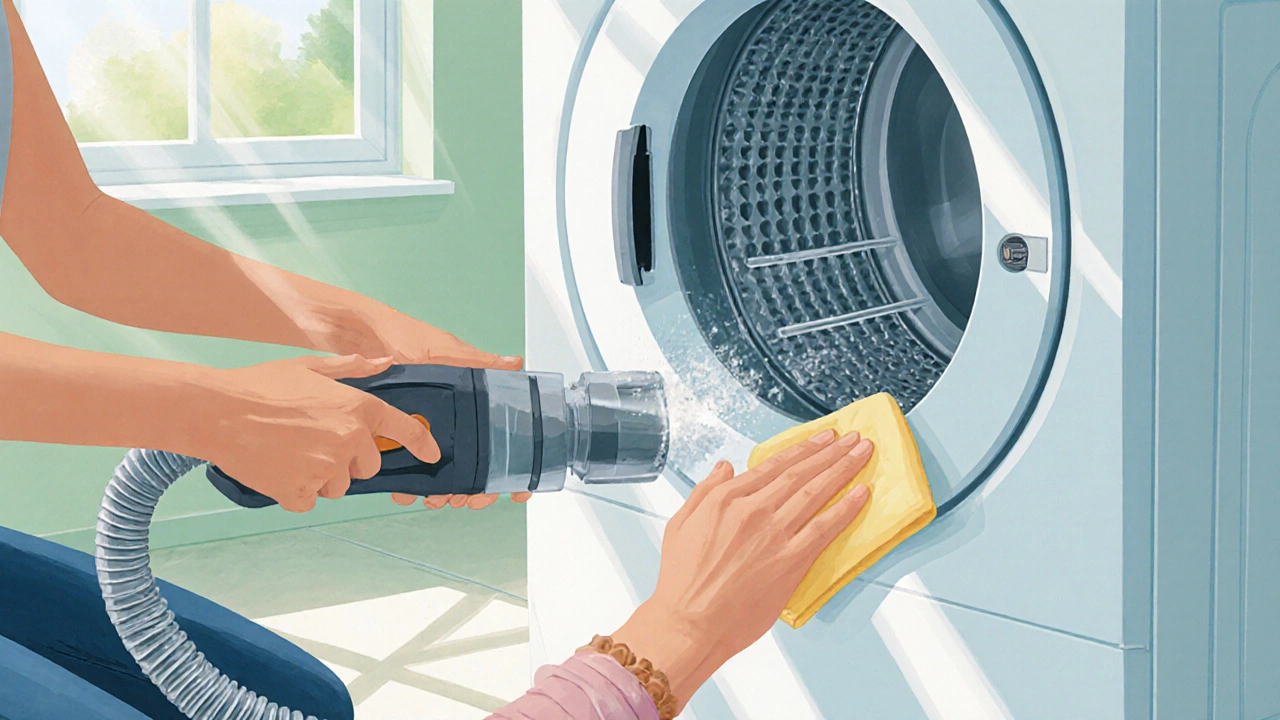
Diagnosing Dryer Problems: A Handy Checklist
| Symptom | Likely cause | Typical fix |
|---|---|---|
| No heat | Heating element, thermostat, or thermal fuse | Test and replace faulty part |
| Drum won’t turn | Drive belt or motor | Replace belt or service motor |
| Loud grinding | Drum bearing or vent hose | Replace bearing kit, reseat hose |
| Stops mid‑cycle | Thermal fuse or moisture sensor | Replace fuse, clean sensor bars |
| Won’t start | Door switch, power cord, breaker | Reset breaker, replace switch/cord |
Preventive Maintenance Tips
Regular care can stop 70% of dryer breakdowns. Follow this simple routine:
- Clean the lint filter after every load - it’s the most overlooked part.
- Every 6‑12 months, detach the vent hose and blow out lint with a vacuum.
- Wipe the moisture sensor bars with a damp cloth to avoid residue.
- Inspect the door latch for wear; tighten or replace if it feels loose.
- Schedule an annual professional check for the heating element and belt, especially if you notice longer drying times.
These habits keep airflow smooth, prevent overheating, and extend the dryer’s service life.
Frequently Asked Questions
Why does my dryer take longer than usual to dry clothes?
A clogged lint filter or vent greatly reduces airflow, forcing the heating element to work harder. Clean the filter after each load and vacuum the vent hose at least twice a year.
My dryer makes a squealing sound. What’s wrong?
Squealing usually means the drive belt is slipping or the motor bearings are worn. Inspect the belt for cracks and replace it if needed; a worn motor may need professional service.
Can I replace the heating element myself?
Yes, for most vented models the element is bolted to the back panel and can be swapped with basic tools. Always unplug the dryer and verify the element is truly defective with a multimeter before ordering a replacement.
What safety precautions should I take when repairing a dryer?
Unplug the appliance, wear insulated gloves, and never work on a dryer that’s still connected to a gas line without proper shut‑off. Test all electrical components for continuity before re‑assembly.
How often should I clean the vent hose?
Aim for once a year if you dry large loads regularly, or every six months for high‑usage households. A blocked vent is a leading cause of dryer fires.

